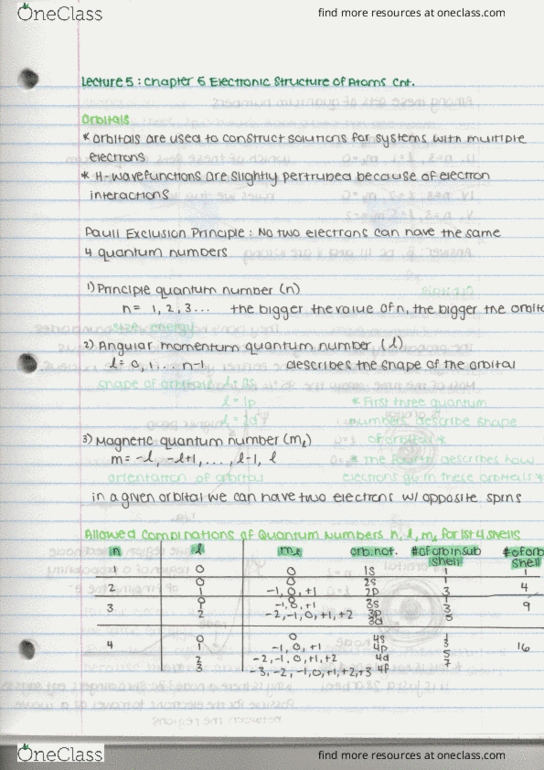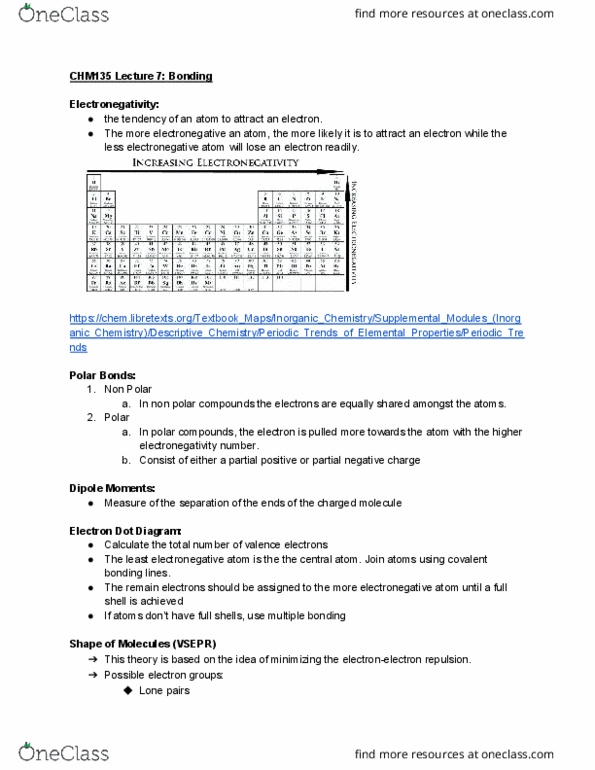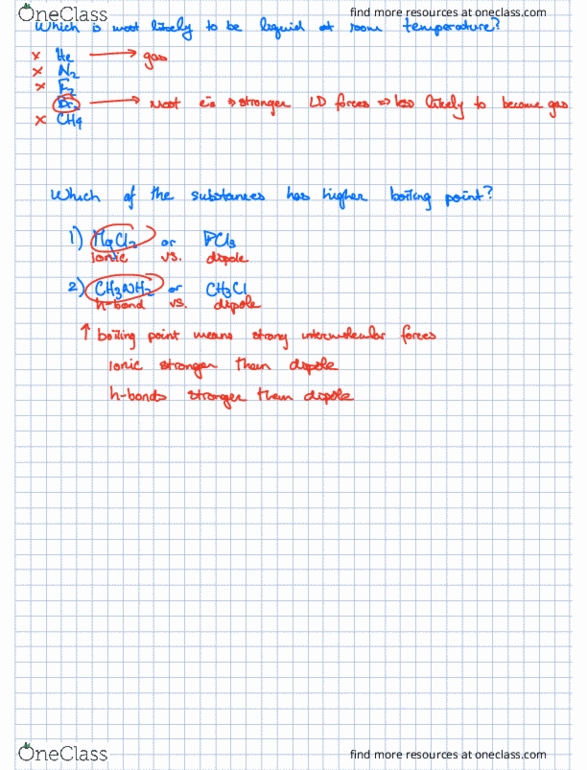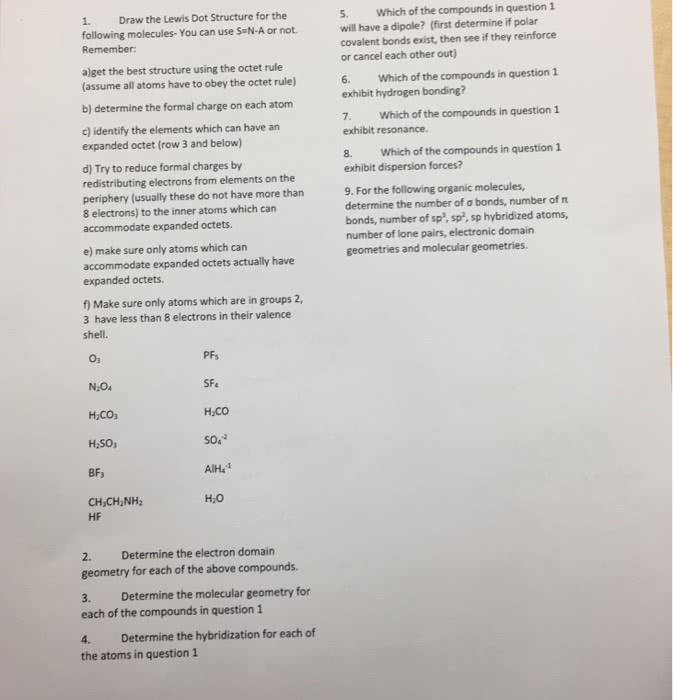CHM135H1 Lecture Notes - Fall 2018 Lecture 7 - Fluorine, Intermolecular force, Prestressed concrete
CHM135H1 verified notes
7/38View all
Document Summary
Electronegativity: the tendency of an atom to attract an electron. The more electronegative an atom, the more likely it is to attract an electron while the less electronegative atom will lose an electron readily. https://chem. libretexts. org/textbook_maps/inorganic_chemistry/supplemental_modules_(inorg anic_chemistry)/descriptive_chemistry/periodic_trends_of_elemental_properties/periodic_tre nds. Measure of the separation of the ends of the charged molecule. Calculate the total number of valence electrons. The least electronegative atom is the the central atom. The remain electrons should be assigned to the more electronegative atom until a full shell is achieved. If atoms don"t have full shells, use multiple bonding. This theory is based on the idea of minimizing the electron-electron repulsion. Water has a bent or angular shape due to the repulsion caused by the lone pairs. The lone pairs push on the covalent bonds between oxygen and hydrogen hence giving a. Occurs between ions and partial charges of polar molecules. Occurs between polar molecules where the partial opposite charges are attracted to each other.





